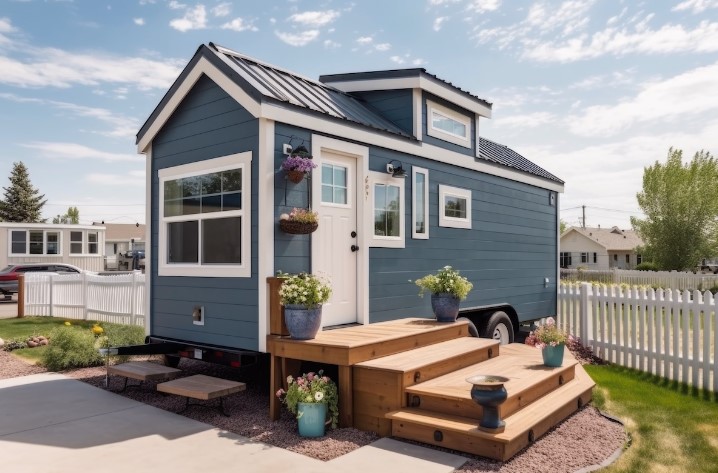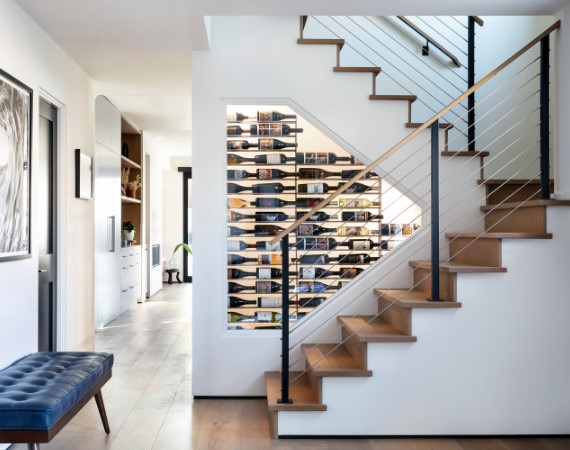
The Ultimate Guide to Tiny Homes: Living Big in a Small Space
Introduction
What is a Tiny Home?
Tiny homes are compact, efficient living spaces that typically range from 100 to 400 square feet. They prioritize minimalist living, with a focus on functionality and sustainability. But don’t let their size fool you—tiny homes can be incredibly cozy and comfortable!
Why Tiny Homes are Trending
Tiny homes have become a global sensation. With rising housing costs, environmental concerns, and a desire for simpler living, many are drawn to the tiny home lifestyle. It’s not just about downsizing; it’s about upgrading your quality of life by focusing on what truly matters.
History of the Tiny Home Movement
Early Beginnings
The concept of living small isn’t new. Throughout history, various cultures have embraced small living spaces, from yurts in Mongolia to Japanese tea houses. The modern tiny home movement began gaining traction in the early 2000s, spearheaded by visionaries like Jay Shafer.
Modern Popularity
Fast forward to today, and tiny homes are more popular than ever. Television shows, social media, and a growing awareness of environmental issues have propelled the movement into the mainstream. People are increasingly seeking ways to reduce their carbon footprint and live more sustainably.
Benefits of Tiny Home Living
Financial Freedom
One of the most compelling reasons to go tiny is the financial freedom it offers. With lower building and maintenance costs, tiny homes can free you from hefty mortgages and high utility bills, allowing you to save more and live debt-free.
Environmental Impact
Tiny homes are eco-friendly by design. They use fewer materials to build and consume less energy to heat, cool, and maintain. Many tiny homeowners incorporate sustainable practices like solar panels, composting toilets, and rainwater collection systems.
Simplified Lifestyle
Living in a tiny home encourages a minimalist lifestyle. With limited space, you prioritize what you truly need and value. This shift can lead to a more meaningful and intentional way of living, free from the clutter and distractions of a larger home.
Challenges of Tiny Home Living
Limited Space
The most obvious challenge is space. Adjusting to a smaller living area requires creativity and careful planning. Every inch counts, and multifunctional furniture and smart storage solutions become essential.
Zoning Laws and Regulations
Zoning laws and building codes can be a significant hurdle for tiny home enthusiasts. These regulations vary widely by location and can impact where and how you can build or park your tiny home.
Social Adjustments
Living tiny can also mean adjusting socially. Whether it’s sharing a small space with family members or dealing with the perceptions of others, transitioning to tiny living requires a willingness to adapt and communicate.
Designing Your Tiny Home
Choosing the Right Layout
The layout is crucial in a tiny home. Open floor plans, lofted sleeping areas, and convertible spaces are popular choices. It’s important to design a layout that fits your lifestyle and needs.
Maximizing Storage
Storage is a top priority in any tiny home. Built-in shelves, underfloor storage, and multifunctional furniture can help maximize your space. Think creatively about how to utilize every nook and cranny.
Multi-functional Furniture
Furniture that serves multiple purposes is a game-changer. Consider options like a sofa that converts into a bed, a dining table that doubles as a workspace, or stairs that also function as storage units.
Building Your Tiny Home
DIY vs. Professional Builders
Deciding whether to build your tiny home yourself or hire professionals depends on your skills, budget, and timeline. DIY builds can be cost-effective but require a significant time investment. Professional builders offer expertise and efficiency.
Materials and Costs
The materials you choose impact both the cost and sustainability of your tiny home. Reclaimed wood, recycled materials, and energy-efficient appliances can help reduce your environmental footprint and expenses.
Building Process Overview
The building process involves several steps: planning, obtaining permits, constructing the frame, installing utilities, and finishing the interior. Each step requires careful attention to detail to ensure your tiny home is safe and comfortable.
Living in a Tiny Home
Daily Life Adjustments
Life in a tiny home requires adjusting your daily habits. You’ll need to be more mindful of your space, routines, and possessions. This shift can lead to a more organized and intentional lifestyle.
Organizing Your Space
Keeping your tiny home tidy is essential. Regular decluttering, smart storage solutions, and efficient use of space help maintain a comfortable living environment.
Maintaining Your Tiny Home
Regular maintenance is key to keeping your tiny home in good condition. This includes checking for wear and tear, ensuring all systems are functioning properly, and making necessary repairs promptly.
Tiny Home Communities
Types of Tiny Home Communities
Tiny home communities range from rural retreats to urban co-housing projects. Some are designed for full-time living, while others are vacation rentals or co-living spaces.
Benefits of Joining a Community
Joining a tiny home community offers several benefits, including shared resources, social support, and a sense of belonging. These communities often promote sustainability and mutual aid.
How to Find a Tiny Home Community
Finding the right community involves research and networking. Online forums, social media groups, and tiny home festivals are great places to start. Visiting potential communities can also help you find the best fit.
Financial Considerations
Cost of Building vs. Buying
Building a tiny home can be more affordable than buying one, but it requires time, skills, and resources. Buying a pre-built or custom-designed tiny home offers convenience and professional craftsmanship.
Financing Options
Financing a tiny home can be challenging, as traditional mortgages may not apply. However, options like personal loans, RV loans, and specialized tiny home financing companies can help.
Long-term Financial Benefits
In the long run, tiny homes can offer significant financial benefits. Lower utility bills, reduced maintenance costs, and the potential for rental income make tiny homes a smart financial choice.
Environmental Impact
Sustainability Features
Tiny homes often incorporate sustainable features like solar panels, composting toilets, and energy-efficient appliances. These features reduce your environmental footprint and promote green living.
Reducing Carbon Footprint
By using fewer materials and consuming less energy, tiny homes help reduce your carbon footprint. Many tiny homeowners also adopt eco-friendly practices like recycling, composting, and reducing waste.
Off-Grid Living Options
For those seeking complete independence, off-grid living is a viable option. Solar power, rainwater collection, and composting systems allow you to live sustainably without relying on public utilities.
Case Studies and Success Stories
Inspirational Tiny Home Journeys
Hearing from others who have embraced the tiny home lifestyle can be incredibly inspiring. Many have found happiness, freedom, and a sense of community through their tiny homes.
Lessons Learned from Tiny Home Owners
Learning from the experiences of others can help you navigate the challenges and make the most of your tiny home journey. From design tips to lifestyle adjustments, these insights are invaluable.
FAQs about Tiny Homes
- What is the average cost of building a tiny home?
- The cost can vary widely, but on average, building a tiny home can range from $20,000 to $100,000, depending on materials and labor.
- Can you legally live in a tiny home?
- This depends on local zoning laws and regulations. It’s important to research and ensure compliance with your area’s requirements.
- How do tiny homes handle utilities?
- Tiny homes can be connected to public utilities or designed for off-grid living with solar panels, composting toilets, and water tanks.
- What is the lifespan of a tiny home?
- With proper maintenance, a tiny home can last as long as a traditional house, typically 30-50 years or more.
-
Are tiny homes suitable for families?
- While challenging, it is possible for families to live in tiny homes. Creative design and efficient use of space are essential for accommodating multiple people.
